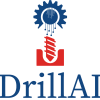The data preparation module is the first critical tool for data analysis used in various industries to transform drilling raw data into an analyzable format.
The data preparation module includes various techniques such as
1. Data cleaning
2. Anomaly treatment
3. Unit conversions
4. Data transformation
5. Operation detection
6. Feature engineering and creation
7. Data aggregation and integration to prepare data for analysis.
The data preprocessing and integration module ensures that data is accurate, consistent, and in a usable format for analysis, and identifies and corrects errors or inconsistencies in data, while data integration combines data from multiple sources into a single dataset.
The data preprocessing and integration module serves as the essential gateway that bridges the gap between the chaotic, unrefined data generated during drilling operations and the analytical framework required for meaningful predictions and optimizations.
It encompasses a suite of techniques, including data cleaning, anomaly treatment, unit conversions, data transformation, operation detection, feature engineering, and data integration, all of which collectively serve to mold the data into a cohesive and analyzable format.
Data cleaning takes the forefront in rectifying inaccuracies and inconsistencies, while anomaly treatment identifies and rectifies outliers that can skew the modeling process.
Unit conversions ensure uniformity in measurement units, enabling seamless integration of diverse data sources.
Data transformation techniques prepare data for modeling by normalizing distributions or reducing dimensionality.
Operation detection aids in segmenting data to analyze distinct drilling phases.
Feature engineering and creation, a creative aspect of data preparation, generates new variables that enhance the modeling process.
Finally, data integration consolidates data from disparate sources, creating a comprehensive dataset ready for in-depth analysis.
In essence, the data preparation module is the cornerstone upon which accurate drilling operation models and ROP predictions are constructed, paving the way for efficient optimization strategies in the oil and gas industry.


